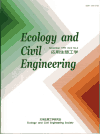Volume 27, Issue 1
Displaying 1-6 of 6 articles from this issue
- |<
- <
- 1
- >
- >|
ORIGINAL PAPER
-
2025Volume 27Issue 1 Pages 1-20
Published: 2025
Released on J-STAGE: July 31, 2025
Advance online publication: December 06, 2024Download PDF (1178K) -
2025Volume 27Issue 1 Pages 21-38
Published: 2025
Released on J-STAGE: July 31, 2025
Advance online publication: January 01, 2025Download PDF (2244K)
CASE STUDY
-
2025Volume 27Issue 1 Pages 39-50
Published: 2025
Released on J-STAGE: July 31, 2025
Advance online publication: December 25, 2024Download PDF (8125K) -
2025Volume 27Issue 1 Pages 51-59
Published: 2025
Released on J-STAGE: July 31, 2025
Advance online publication: January 20, 2025Download PDF (3434K)
TOPICS
-
2025Volume 27Issue 1 Pages 61-67
Published: 2025
Released on J-STAGE: July 31, 2025
Download PDF (6228K) -
2025Volume 27Issue 1 Pages 69-75
Published: 2025
Released on J-STAGE: July 31, 2025
Download PDF (3805K)
- |<
- <
- 1
- >
- >|
